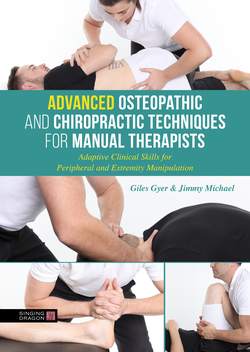Читать книгу Advanced Osteopathic and Chiropractic Techniques for Manual Therapists - Giles Gyer - Страница 26
На сайте Литреса книга снята с продажи.
Misunderstanding, or intentional misinterpretation?
ОглавлениеSome critics are so critical about spinal manipulation, as if nothing ‘good’ can be expected from it! They find unthinkable problems in the basic philosophy and principles of manipulation, and consider every theoretical explanation to be flawed, no matter the evidence against them. One common argument of these critics against the use of spinal manipulation in visceral disorders is that organs are not affected even if a spinal nerve root is completely cut, so there is no valid point in using the therapy. Is this really so?
It is true that the complete loss of a spinal nerve root will certainly paralyse something in the musculoskeletal structure, but not a visceral organ. However, this does not mean organs are not affected at all, even if a serious spinal injury occurs. After a major spinal nerve injury, organs will continue to run smoothly for a short duration, but the long-term fate of them is scary. There will, in fact, be autonomic dysregulation over time, which will gradually lead to organ dysfunction and make matters worse for overall systemic health (Sezer, Akkuş and Uğurlu 2015; Stein et al. 2010). This actually proves the oldest philosophy of spinal manipulation, that all organs and structures in the body work interdependently, and that spinal health is critical for their smooth functioning. Moreover, because spinal manipulation has been reported to influence various functions of the ANS, the argument that manipulation cannot affect visceral function becomes invalid, although these effects are indirect.
On the other hand, we believe the critics have also misunderstood the very concept on which therapists of spinal manipulation treat visceral disorders. The basic theory of visceral manipulation, that all the body’s organs and structures move with an interconnected synchronicity, is actually based on fascia, not on nerve supply from the spine to the organs. A fascia is an interconnected network of fibrous collagenous tissues that has the ability to adjust its elasticity and consistency under tension (Findley et al. 2012). It supports the body in a number of ways, by:
• providing ongoing physiological support for the body’s metabolically active systems composed of specialised cells and tissues
• connecting, communicating and coordinating all parts of the body in its entirety
• contributing to haemodynamic and biochemical processes
• assisting in response to mechanical stress
• maintaining posture and locomotion
• facilitating movements.
The effects of spinal manipulation on fascia have been confirmed in the current literature. Manipulation has been reported to breach fascial crosslinks, ease fascial tightness and normalise fascial motion (Harper, Steinbeck and Aron 2016; Oulianova 2011; Simmonds, Miller and Gemmell 2012). Therefore, we conclude that it is unreasonable to find problems with our claim that manipulation corrects disharmony in visceral movement.
In conclusion, we suggest that before labelling a claim controversial, the critics need first to thoroughly understand the therapeutic goals behind the mechanical stimulation of the spine. Unlike a conventional intervention, spinal manipulation is not a curative therapy. The ultimate goal of this therapy is to create the best possible environment for the body’s own self-healing mechanisms. Hence, by affecting visceral function via the ANS and releasing fascial restrictions, therapists of spinal manipulation are actually sending ‘SOS’ signals to the brain and paving the way so that the body can self-heal on its own.
